Keep Silence
-
Ships in 3 to 4 weeks
Details
Description
SKU: CN.09630
Composed by David Gillingham. Score and parts. Duration 8:00. Published by C. Alan Publications (CN.09630).Keep Silence is a fantasy for band celebrating a broad range of moods ranging from wonder and mysteriousness to awe and celebration. Based on the French carol melody known as Picardy, the fluctuation between minor and major tonality enhances the broad range of emotions.
Keep Silence is a fantasy for band to the tune known as Picardy, a French carol melody. The tune is found in most Protestant hymnals with the words taken from the 4th century liturgy of St. James. The fluctuation between minor and major tonality and the fluctuation between awe and wonder reflected by the words make this hymn particularly attractive. The fantasy attempts to show a broad range of mood from wonder and mysteriousness to awe and celebration. The work begins mysteriously with ascending and descending D-Aeolian (natural minor) lines in the clarinet which give way to the hymn tune presented by solo flute, solo muted trumpet, and bells. The modal passages eventually lead to a transition leading to a presentation of the hymn by the trombone choir accompanied by anxious sixteenths in the flutes, clarinets and keyboard percussion which are based on motivic material from the hymn tune. The timpani interjects some dramatic statements between phrases. This leads to a rather aggressive statement by the brass which doubles each note of the opening motive of the hymn and diminishes the note values to sixteenths. This leads joyously to G-flat major. The volume dramatically decreases and steady sixteenths in the bells and vibraphone accompany the hymn tune played by solo flute with an obligato by solo oboe. The harmony of the hymn tune changes significantly in this presentation, creating a sort of heavenly atmosphere. The aggressive sixteenth notes of the previous transitional section return quite suddenly and grow into fanfare-like majesty and segue into a presentation of the hymn that is predominantly in C-major. The section grows to a pinnacle, modulates to F-minor, and returns to mysteriousness. Muted trumpets present the aggressive transition material in ethereal fashion along with the vibraphone while the low brass and woodwinds play the hymn tune in plaintive somberness. At the end of the tune, the remaining brass burst forth with the transition material and lead to one final statement of the penultimate phrase of the hymn in F-major. A coda follows with brass and woodwinds playing the first and second phrases of the hymn. The brass then begin a sort of benediction loosely based on the penultimate phrase of the hymn followed by euphonium solo on the final phrase, followed by muted trumpet on the second phrase and ending with alto saxophone on the first phrase--the reverse order signifying a return to the reverence of the beginning.
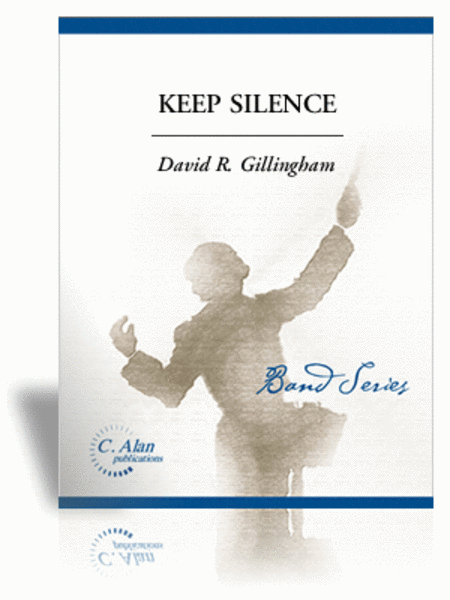
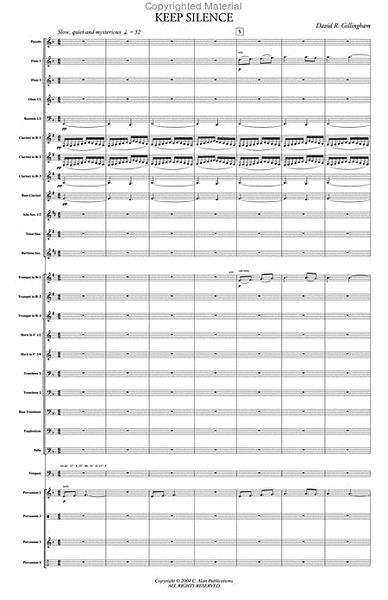
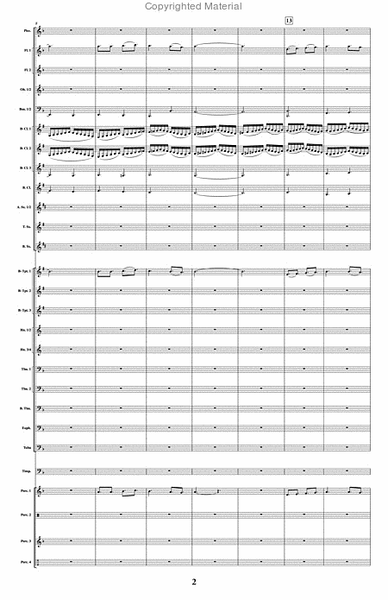
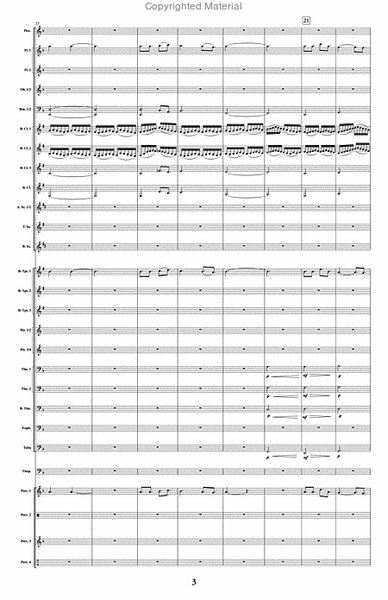
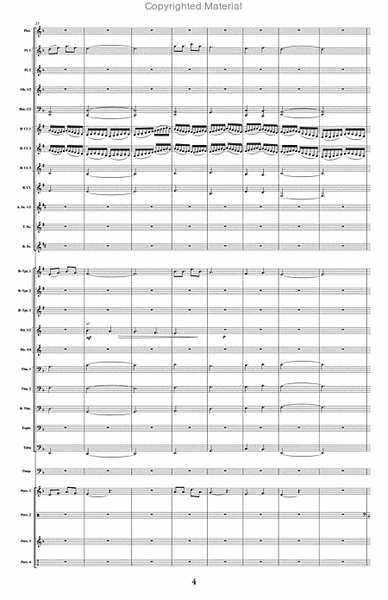
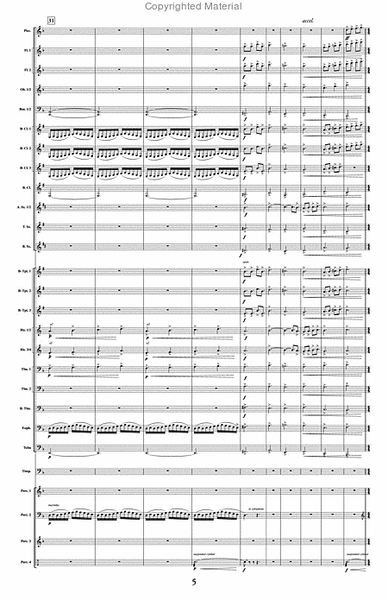
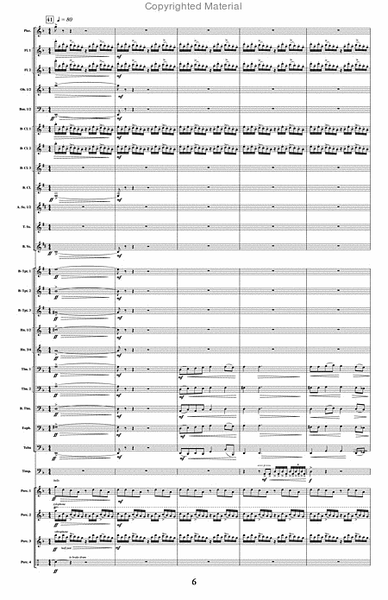
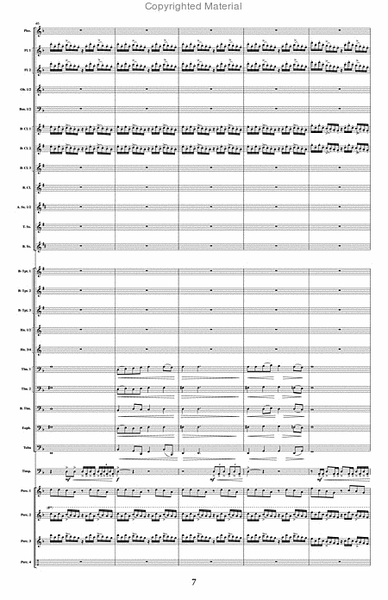
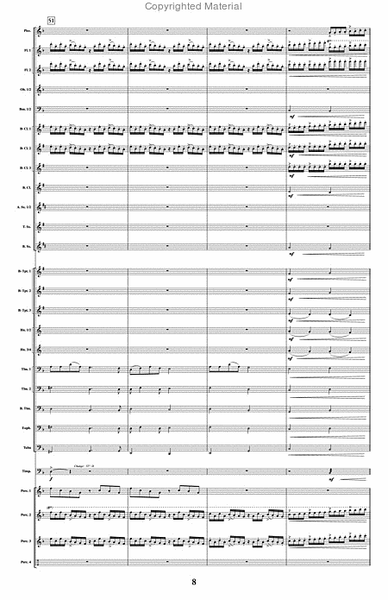
 Share
Share